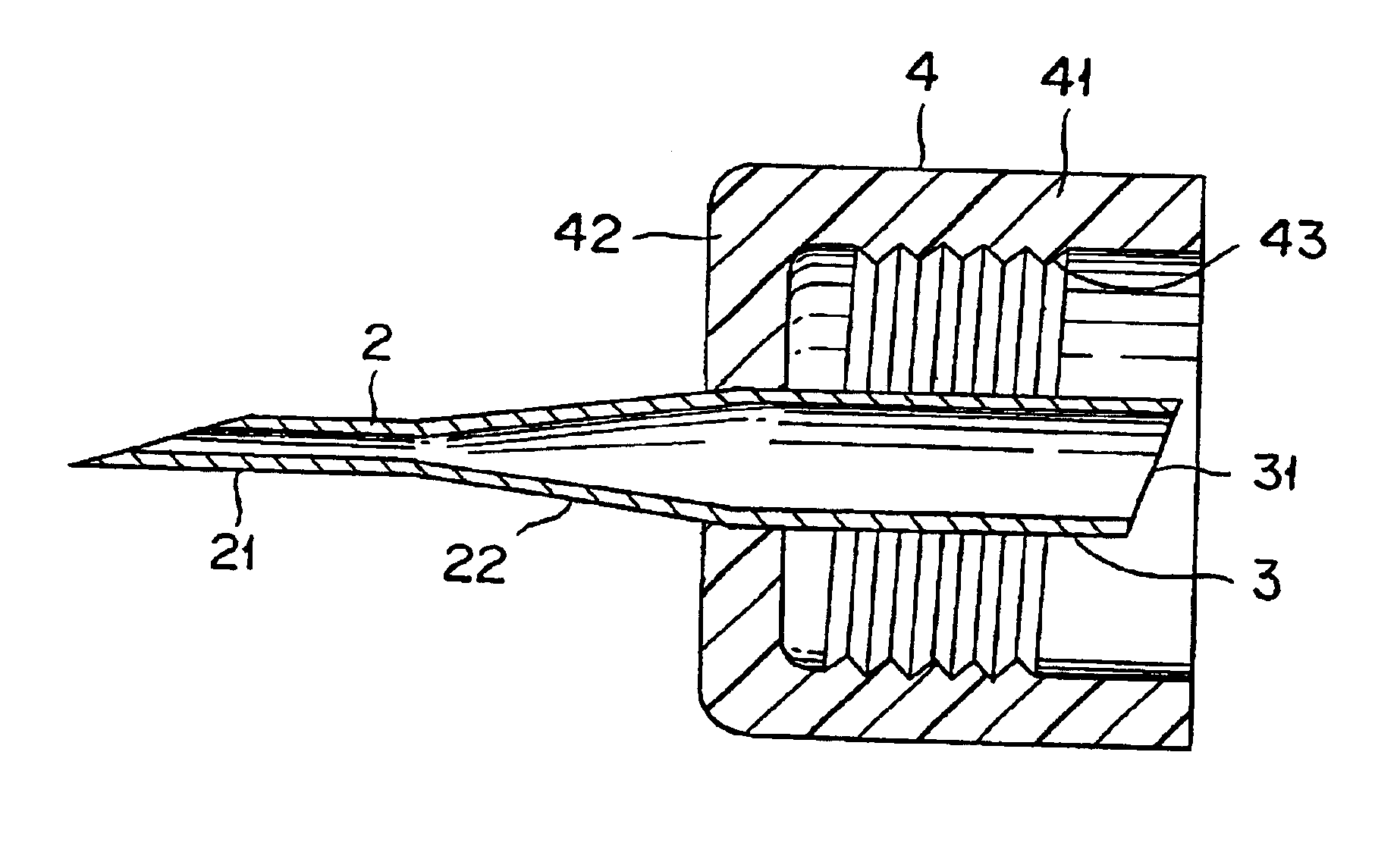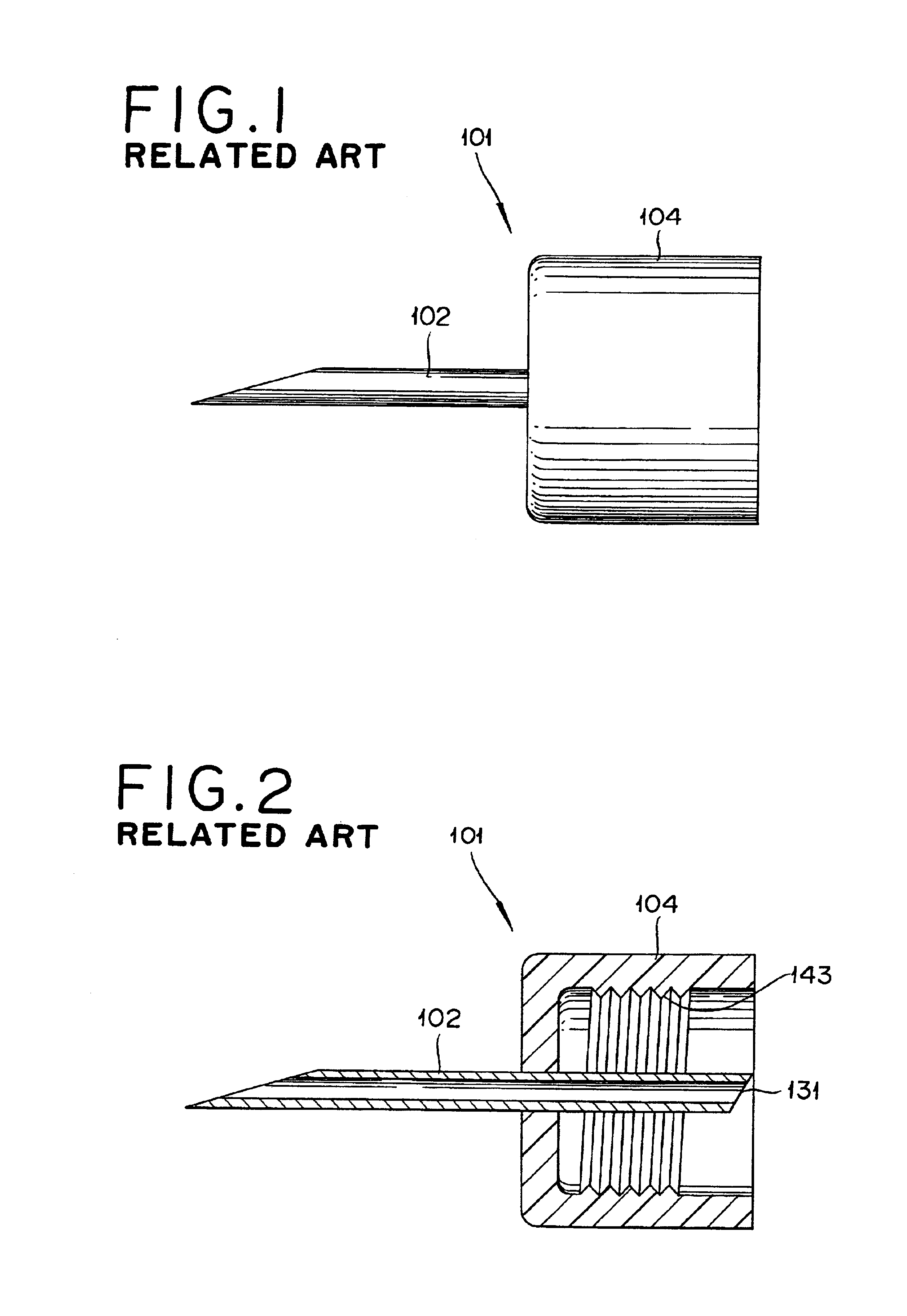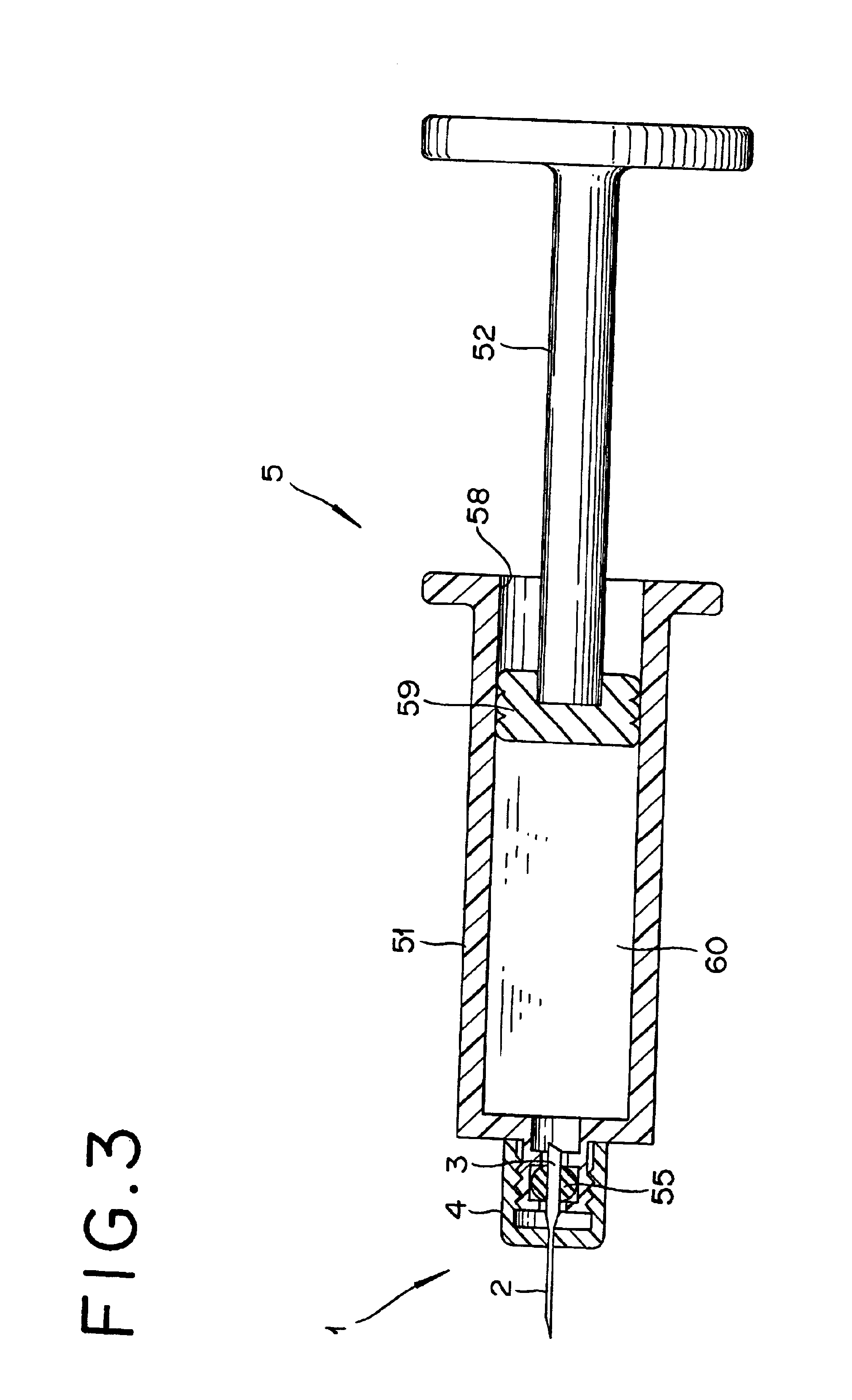Injection needle and injection apparatus
a technology of injection needle and injection apparatus, which is applied in the direction of injection needles, intravenous devices, infusion syringes, etc., can solve the problems of affecting the safety of patients, difficult to assemble thin needles firmly to the base in the middle of the needle, and the thin needles are easy to be too weak, so as to reduce patients' pain, easy to manufacture, and sufficient strength
- Summary
- Abstract
- Description
- Claims
- Application Information
AI Technical Summary
Benefits of technology
Problems solved by technology
Method used
Image
Examples
first embodiment
FIG. 3 is a cross sectional view of a drug injection apparatus equipped with a drug injection needle according to the invention; FIG. 4 is a cross sectional view of a drug injector main body show in FIG. 3; FIG. 5 is a side view of the drug injection needle show in FIG. 3; and FIG. 6 is a cross sectional view of the drug injection needle show in FIG. 3.
The drug injection apparatus shown in FIG. 3 includes a drug injection needle 1 and an injector main body 5, and injects liquid drug 60 through the distal end of the drug injection needle 1 when a plunger 52 is pushed.
As shown in FIG. 4, the injector main body 5 comprises a drug container 51, which is of a substantially cylindrical shape and holds the liquid drug 60 inside, and the plunger 52 that is capable of moving reciprocally and axially inside the drug container 51.
A drug injection port 54 is formed on a boss 53 provided on the distal end (left hand side in the drawing) of the drug container 51, this drug injection port 54 is se...
second embodiment
The outer diameter of the drug introducing needle part 3a in the second embodiment should be preferably in the range of 0.3-2 mm, or more preferably in the range of 0.35-1.5 mm. Accordingly, the inner diameter of the drug introducing needle part 3a should be preferably in the range of 0.25-1.2 mm.
The affixing of the puncturing needle part 2a and the drug introducing needle part 3a to the housing 4a is conducted by insert molding or gluing, for example, in a shape as shown in FIG. 11. Since the puncturing needle part 2a and the drug introducing part 3a are formed of two separate needle bodies as shown in FIG. 11, the drug injection needle 1a can be manufactured by a conventional method without requiring any special method. Moreover, since the needle parts 2a and 3a are assembled to engage with the attaching holes 44a and 45a respectively, they are firmly affixed to the housing 4a.
If the drug injection needle 1a is a long needle normally used for subcutaneous and intramascular admini...
third embodiment
The outer diameter of the drug introducing needle part 3b in the third embodiment should be preferably in the range of 0.3-2 mm, or more preferably in the range of 0.35-1.5 mm. Accordingly, the inner diameter of the drug introducing needle part 3b should be preferably in the range of 0.25-1.2 mm.
The affixing of the puncturing needle part 2b to the housing 4b is conducted by insert molding or gluing, for example, in a shape as shown in FIG. 16. Since the drug introducing part 3b is formed integrally with the housing 4b from the same material as shown in FIG. 16, the drug injection needle 1b can be manufactured by a conventional method without requiring any special method. Moreover, since the puncturing needle part 2b is assembled to engage with the attaching hole 44b, it is firmly affixed to the housing 4b.
If the drug injection needle 1b is a long needle normally used for subcutaneous and intramascular administration, it is not necessary to make the entire portion that can puncture ...
PUM
 Login to View More
Login to View More Abstract
Description
Claims
Application Information
 Login to View More
Login to View More - R&D
- Intellectual Property
- Life Sciences
- Materials
- Tech Scout
- Unparalleled Data Quality
- Higher Quality Content
- 60% Fewer Hallucinations
Browse by: Latest US Patents, China's latest patents, Technical Efficacy Thesaurus, Application Domain, Technology Topic, Popular Technical Reports.
© 2025 PatSnap. All rights reserved.Legal|Privacy policy|Modern Slavery Act Transparency Statement|Sitemap|About US| Contact US: help@patsnap.com



